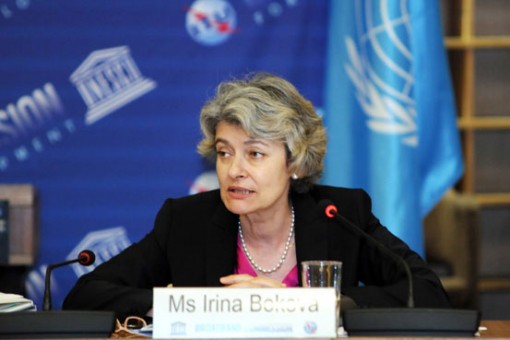3rd March, 2016

The UNESCO’s Institute for Statistics (UIS) says 16 million girls, below age 11, will not get basic education, compared to about eight million boys, if current trends continue.
The UNESCO Director-General, Irina Bokova, stated this in a statement credited to a new report released on Thursday by the organisation ahead of the run-up to International Women’s Day slated for March 8.
The report, “UNESCO eAtlas of Gender Inequality in Education” showed that girls were still the first to be denied the right to education, despite all the efforts and progress made over the past 20 years.
“We will never achieve any of the Sustainable Development Goals (SDGs) without overcoming the discrimination and poverty that stunt the lives of girls and women from one generation to the next.
“We must work at all levels, from grassroots to global level, to put equity and inclusion at the heart of every policy so that all girls, whatever their circumstances, can go to school, stay in school and become empowered citizens,” the report said .
The report said gender disparities had remained the highest in the Arab world, sub-Saharan Africa as well as in South and West Asia.
It said across sub-Saharan Africa, 9.5 million girls would never set their feet in any classrooms compared to five million boys, according to UIS data.
“In total, more than 30 million children aged between six years to 11 years are out of school across the region.
“Some will start at a later age, but many more will remain entirely excluded with girls facing the biggest barriers.
“The gender gap is even wider in South and West Asia, where 80 per cent out-of-school girls will never enter formal education compared to 16 per cent of out-of-school boys.
“This affects about four million girls compared to less than one million boys.
“Girls form the majority of the millions of children excluded from schools in the Arab world, although precise estimates are impossible to produce due to conflicts in the region,” the eAtlas said.
The document also showed gender gaps from primary education to tertiary education, using the latest available data from the UIS.
With about 100 interactive maps and charts, the eAtlas showed the educational pathways of girls and boys in more than 200 countries and territories.
“We clearly see where the injustices begin and how they accumulate through the lives of the most marginalised girls and women,” said Silvia Montoya, the Director of the UIS.
“But the data also show that girls, who do manage to start primary school and make the transition to secondary education, tend to outperform boys and continue their studies,” she said.
NAN reports that the UIS produces annual data of out-of-school children and estimates concerning their likelihood to start school in the future.



